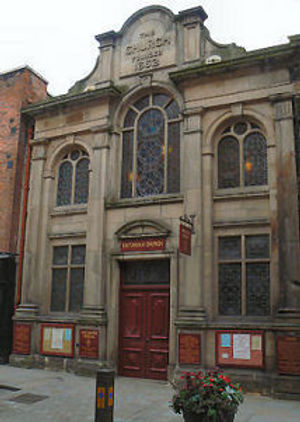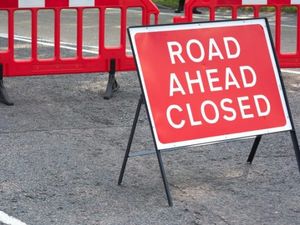Church history found in two year project
The hidden history of Shrewsbury Unitarian Church has been recorded as part of a major project undertaken over two years by members of The Arts Society Shrewsbury.

Over the past two years, a team of 12 Church Recorders from The Arts Society Shrewsbury have compiled a detailed record of the church furnishings, divided into nine categories such as memorials, woodwork, windows, paintings and documents, and a miscellaneous section which includes the organ.
Each item has been carefully researched to determine its origin and history. The illustrated, hard-bound Record will be lodged at the church, a copy held at Shropshire Archives and digital copies sent to the Victoria & Albert Art Library, the Church Care Library and Historic England.
Martin Locke, leader of the church recording team, said: ‘’It has been a fascinating and challenging two years for the group and we are very much looking forward to handing over the bound Record later this month.’’
Debra Burbery, chair of the church committee, added: "This year Shrewsbury Unitarian Church celebrates 300 years since being rebuilt after local rioting and it seems fitting to leave such a legacy for the next 300 years."
The church is on High Street next to the House of Fraser department store, and the 19th century facade masks a fascinating history.
Founded in 1662 when dissenters from the Church of England began meeting in secret on this site, the church later welcomed Charles Darwin who worshipped there as a boy, and Samuel Taylor Coleridge who preached a sermon with a view to becoming the Minister – he never did take up the post.
The church is open to members of the public every Tuesday and Thursday afternoon and there is a service at 10.30am every Sunday.
The national Arts Society (of which The Arts Society Shrewsbury is a member), has recorded over 1,700 churches and chapels since 1973. This is the third project carried out by the current Shrewsbury team who have previously recorded the churches at Pitchford and Grinshill.
In addition to a church having a comprehensive inventory of its furnishings, Records are used by researchers, and can be of valuable assistance to the police to help identify retrieved stolen artefacts and to insurance companies which need to identify items.
The Arts Society Shrewbury has around 250 members from across Shropshire who meet for an afternoon lecture on the third Wednesday of each month at the Lord Hill Hotel in Shrewsbury.
Members are offered a varied programme of visits to galleries, museums and historic buildings and volunteers are engaged not only in Church Recording, but also help at the Shropshire Archives and support young people’s arts schemes. Information about the group can be found at www.theartssocietyshrewsbury.org.uk
The Record will be handed over to the church on Saturday (20) at a short ceremony starting at 11am.
Invited guests include The Mayor of Shrewsbury, Councillor Jane Mackenzie, representatives of The Arts Society Shrewsbury, The Civic Society and Shrewsbury History Society.





